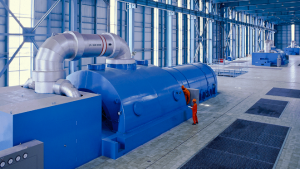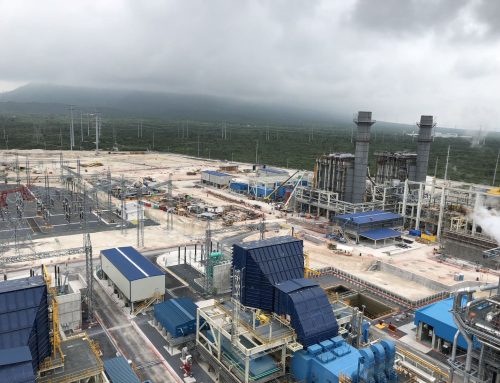Steam turbines play a crucial role in various industries, including power generation, petrochemicals, and manufacturing. The thermal performance evaluation of steam turbines is of utmost importance to ensure optimal efficiency and reliability. In this article, we will explore the intricacies of evaluating the thermal performance of steam turbines around the world, highlighting key considerations, methodologies, and advancements in this field.
Understanding the Significance of Thermal Performance Evaluation
Why is thermal performance evaluation important for steam turbines?
The thermal performance evaluation of steam turbines holds immense significance due to several reasons. Firstly, it helps determine the overall efficiency of the turbine, which directly impacts energy production and cost-effectiveness. Secondly, by assessing the performance, potential issues and inefficiencies can be identified, leading to targeted maintenance and optimization efforts. Lastly, accurate evaluations contribute to meeting environmental regulations and reducing carbon emissions, aligning with sustainable energy practices.
What are the main parameters evaluated in thermal performance assessment?
Thermal performance assessment involves analyzing various parameters to gauge the thermal efficiency and capability of steam turbines. These parameters include:
Throttle Steam Flow: Measuring and monitoring the flow rate of steam entering and exiting the turbine provides insights into its performance.
Temperature: Evaluating the temperature at different points within the turbine aids in detecting inefficiencies and potential problems. It also helps to determine the entering energy.
Pressure: Monitoring pressure differentials throughout the turbine allows for assessing energy conversion efficiency.
Heat Rate: Calculating the heat rate, which represents the amount of heat input required per unit of electricity generated, enables the evaluation of overall efficiency.
Capability: Assessing the actual power output against the design specifications helps identify any deviations or faults.

How is the thermal performance of steam turbines evaluated?
Methodologies for Thermal Performance Evaluation
How is the thermal performance of steam turbines evaluated?
There are various methodologies employed for the thermal performance evaluation of steam turbines. Some common approaches include:
Heat Balance Method: This method involves conducting a comprehensive energy balance across the turbine system, considering inputs, outputs, and heat losses to determine overall performance.
Efficiency Calculation: Using mathematical models and formulas, efficiency indices such as thermal efficiency, isentropic efficiency, and exergy efficiency are calculated to assess the performance.
Performance Monitoring Systems: Advanced monitoring systems equipped with sensors and data acquisition software allow real-time measurement and analysis of critical parameters, facilitating accurate evaluations.
What are the challenges faced in thermal performance evaluation?
Thermal performance evaluation is not without its challenges. Some common hurdles include:
Data Availability: Obtaining reliable and comprehensive data for accurate assessments can be challenging, especially in older or less digitally integrated steam turbine systems.
Instrumentation Accuracy: Ensuring precise and calibrated instrumentation is crucial to obtain accurate measurements required for evaluation.
Complexity of Analysis: Analyzing the vast amount of data collected from various sensors and instruments necessitates robust analytical techniques and expertise.
Operating Conditions: Different operating conditions and load variations can impact the accuracy of performance evaluations, necessitating careful consideration and normalization by using correction curves that take the actual conditions back to reference conditions allowing for a consistent comparison on the same basis.
Advancements and Innovations in Thermal Performance Evaluation
What are some recent advancements in thermal performance evaluation of steam turbines?
Advancements in technology have revolutionized the field of thermal performance evaluation of steam turbines. Some notable developments include:
Sensor Technology: High-precision sensors and wireless sensor networks enable real-time data collection, enhancing accuracy and reducing manual intervention.
Artificial Intelligence (AI): AI algorithms and machine learning techniques can analyze large datasets and identify patterns, anomalies, and potential areas of improvement.
Digital Twins: Creating digital replicas of steam turbines enables virtual simulation and predictive analytics, aiding in proactive maintenance and optimizing performance.
Advanced Analytics: Utilizing statistical modeling, data fusion, and predictive algorithms, advanced analytics offer deeper insights into performance trends and potential optimization opportunities.
Remote Monitoring: Cloud-based platforms allow remote monitoring and analysis of steam turbine performance, enabling experts to provide timely recommendations and support.
Conclusion
Thermal performance evaluation plays a critical role in optimizing the efficiency, reliability, and environmental impact of steam turbines worldwide. By assessing key parameters, employing appropriate methodologies, and leveraging advancements in technology, industries can ensure their steam turbines operate at peak performance, contributing to sustainable energy production and cost-effectiveness.




